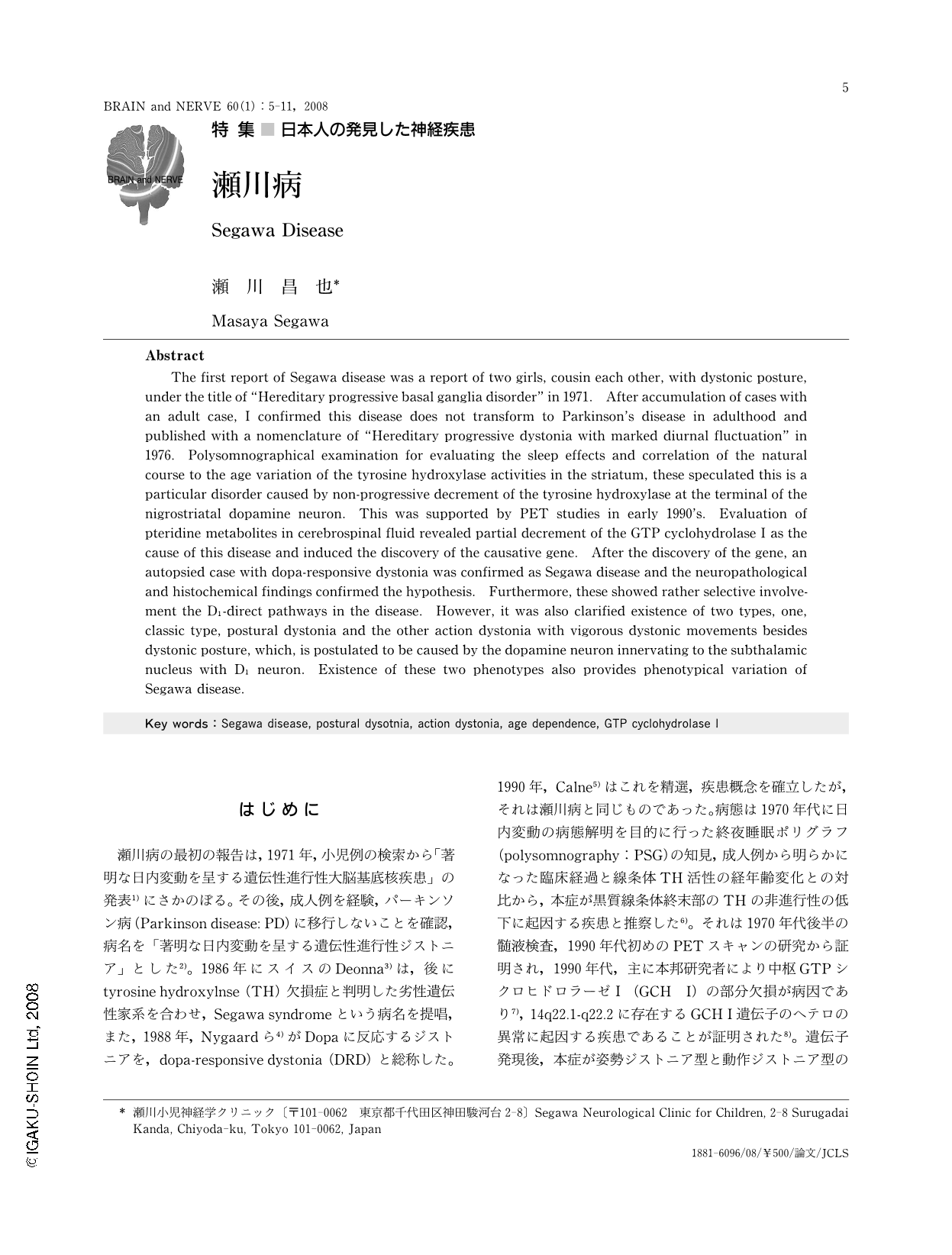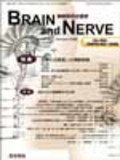Japanese
English
- 有料閲覧
- Abstract 文献概要
- 1ページ目 Look Inside
- 参考文献 Reference
はじめに
瀬川病の最初の報告は,1971年,小児例の検索から「著明な日内変動を呈する遺伝性進行性大脳基底核疾患」の発表1)にさかのぼる。その後,成人例を経験,パーキンソン病(Parkinson disease: PD)に移行しないことを確認,病名を「著明な日内変動を呈する遺伝性進行性ジストニア」とした2)。1986年にスイスのDeonna3)は,後にtyrosine hydroxylnse(TH)欠損症と判明した劣性遺伝性家系を合わせ,Segawa syndromeという病名を提唱,また,1988年,Nygaardら4)がDopaに反応するジストニアを,dopa-responsive dystonia(DRD)と総称した。1990年,Calne5)はこれを精選,疾患概念を確立したが,それは瀬川病と同じものであった。病態は1970年代に日内変動の病態解明を目的に行った終夜睡眠ポリグラフ(polysomnography:PSG)の知見,成人例から明らかになった臨床経過と線条体TH活性の経年齢変化との対比から,本症が黒質線条体終末部のTHの非進行性の低下に起因する疾患と推察した6)。それは1970年代後半の髄液検査,1990年代初めのPETスキャンの研究から証明され,1990年代,主に本邦研究者により中枢GTPシクロヒドロラーゼI(GCH I)の部分欠損が病因であり7),14q22.1-q22.2に存在するGCH I遺伝子のヘテロの異常に起因する疾患であることが証明された8)。遺伝子発現後,本症が姿勢ジストニア型と動作ジストニア型の2病型に大別されることが明らかになった9)。本項では,本症の臨床神経学的・基礎医学的知見を総括し,本症の病態を解説した。
Abstract
The first report of Segawa disease was a report of two girls, cousin each other, with dystonic posture, under the title of “Hereditary progressive basal ganglia disorder” in 1971. After accumulation of cases with an adult case, I confirmed this disease does not transform to Parkinson's disease in adulthood and published with a nomenclature of “Hereditary progressive dystonia with marked diurnal fluctuation” in 1976. Polysomnographical examination for evaluating the sleep effects and correlation of the natural course to the age variation of the tyrosine hydroxylase activities in the striatum, these speculated this is a particular disorder caused by non-progressive decrement of the tyrosine hydroxylase at the terminal of the nigrostriatal dopamine neuron. This was supported by PET studies in early 1990's. Evaluation of pteridine metabolites in cerebrospinal fluid revealed partial decrement of the GTP cyclohydrolase I as the cause of this disease and induced the discovery of the causative gene. After the discovery of the gene, an autopsied case with dopa-responsive dystonia was confirmed as Segawa disease and the neuropathological and histochemical findings confirmed the hypothesis. Furthermore, these showed rather selective involvement the D1-direct pathways in the disease. However, it was also clarified existence of two types, one, classic type, postural dystonia and the other action dystonia with vigorous dystonic movements besides dystonic posture, which, is postulated to be caused by the dopamine neuron innervating to the subthalamic nucleus with D1 neuron. Existence of these two phenotypes also provides phenotypical variation of Segawa disease.

Copyright © 2008, Igaku-Shoin Ltd. All rights reserved.


